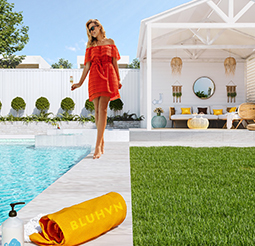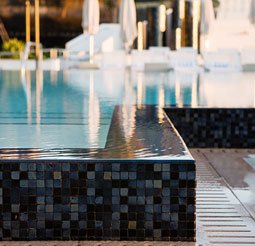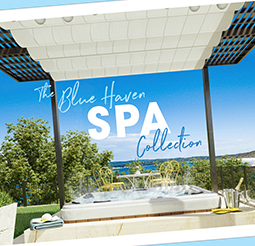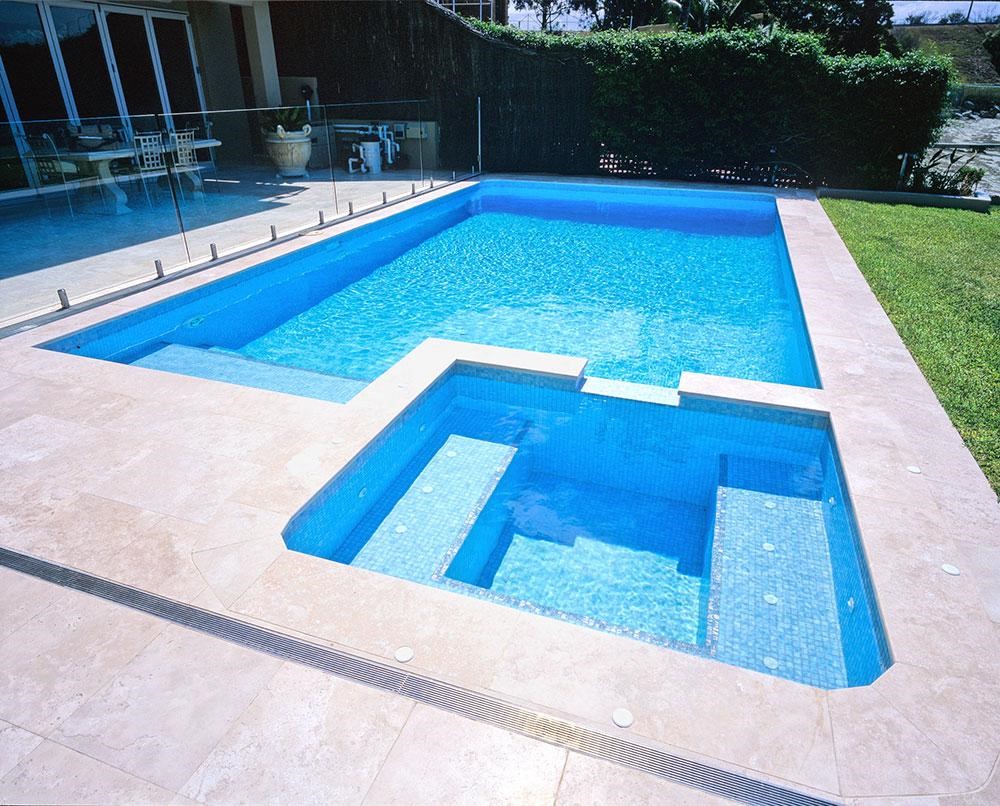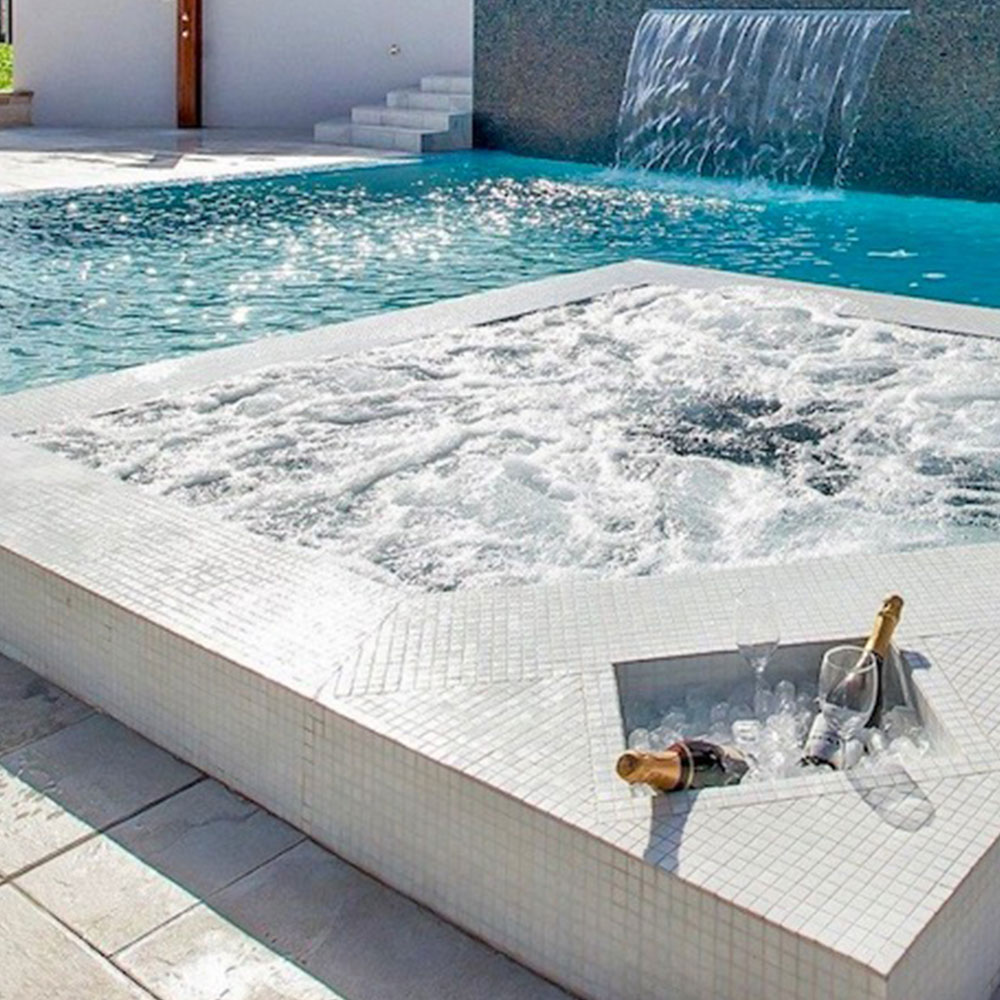Warning Signals: 10 Signs of a Chemical Imbalance in Your Pool
March 13, 2024
As Australians, we love getting out in the backyard swimming pool for a dip on a hot summer day. In fact, the humble family swimming pool is often the source of hours of summer fun for the whole family. To maintain the fun and keep your pool healthy, you need to carefully monitor chemical levels. Here’s everything you need to know about balancing your pool’s chemicals.
Why do pool chemicals need to be balanced?
There’s a lot of science that goes into keeping your pool clean, algae-free and safe to swim in. It requires a complex mixture of water and chemicals. Of course, more chemicals in your water might be better for keeping your pool clean, but it would be dangerous to swim in. By the same token, a pool with nothing to protect it against algae and bacteria growth is going to become dirty much faster.
To solve this, we look for a balance. For example, the pH level measures how acidic the water is. Getting this acidity level right can mean the difference between your chlorine being effective or not. You can use simple testing kits to achieve this; we have provided some more information below.
How to keep pool chemicals balanced
The reality is that sometimes your pool chemicals will become imbalanced. Due to the way everything reacts together in your pool, chemical levels don’t stay the same forever. As a result, you should be checking your balances 2-3 times each week. Most importantly, check your chlorine levels and pH levels. When your pH level is balanced, your chlorine is more effective, as we mentioned above.
These levels are easy to test, and you will have been given instructions by your pool retailer. If not, head to your local pool supplies store and ask for some assistance. You can buy simple testing kits that make checking your balances easy. Once you determine whether certain levels are too low or high, you can adjust them until you achieve the right balance.
Signs your chemicals may not be balanced
Having understood the reasons why chemical imbalances aren’t good and how to address them, how can you determine if your pool is experiencing a chemical imbalance? The most effective approach is to routinely test pool chemical levels in accordance with the manufacturer’s recommendations. However, there are some warning signs to keep an eye out for.
Strong odours
One of the biggest giveaways that your pool chemical levels are incorrect is a strong odour. You should be aware of any strong chlorine smells, as this often indicates your chlorine levels are too high. Learning about the concept of free chlorine (that is still able to sterilise) and spent chlorine (the chloramines in the water) can help you understand this process better. In very simple terms, when chlorine particles have done their job, they can’t be used to sterilise anything else. They then become chloramines.
When too many chloramines are present in the water, it creates a smell, so a strong odour can also indicate that your chlorine levels are too low.
Red eyes after swimming
Most people have been to a public swimming pool, tried to open their eyes underwater, and felt that stinging feeling in their eyes. That, or they arrive home and have red eyes for the rest of the day. This is because public swimming pools often use more chlorine than you would in a residential pool. As a result, the water tends to sting your eyes a little more.
If you experience stinging or red eyes after swimming, there is a good chance you’ve got too much chlorine in your pool. Ideally, you should check your chlorine levels as soon as possible if this is a concern.
Irritated skin
Another indication that your chlorine levels are too high is irritated skin. In particular, high chlorine levels in your pool tend to make your skin feel dry. If you already have skin conditions, it can irritate them and make them feel worse. While it’s true that staying in any type of water for too long can make your skin feel dry, chlorine will speed up the process dramatically.
Once you have checked chlorine levels and corrected them, it’s still good practice to shower after each time you swim in the pool. Even safe levels of chlorine can leave your skin feeling a bit dry, and it’s better to rinse it off when possible. Red eyes and dry skin can also indicate that your pool’s pH levels are too low.
Scale buildup
In many concrete or tiled pools, you may sometimes notice a calcium residue buildup, otherwise called scale buildup. It can appear between tiles or in other cracks or crevices around the pool. Calcium levels are important for your pool, and this residue can be a sign of too much dissolved calcium being present in the water. High levels of dissolved calcium can also cause problems such as cloudy water or scale buildup.
Conversely, if you don’t have enough calcium in your water, it can lead to surface corrosion. So, this highlights the importance of testing your calcium levels regularly. The ideal range is between 200-400ppm for most swimming pools.
Cloudy or murky water
There’s nothing better than the crisp, clear water of a healthy swimming pool. But on the flip side, nobody wants to swim in cloudy or murky water. When you’ve got all of your pool chemicals balanced correctly, your water should be nice and clear. Anything else is probably an indication that something is out of balance.
Cloudy or murky water can be an indication of multiple issues. For example, cloudy water can indicate your chlorine levels are too low or that your pH level is too high. High levels of dissolved calcium can also cause cloudy and murky water.
Algae growth
One of the major reasons we use pool chemicals in the first place is to prevent algae growth. Chlorine is used to kill bacteria and algae in the water, keeping it healthy for us to swim in all year round. But if you start seeing algae forming in your pool, it’s a good sign that your chlorine levels are too low.
As you’ve already read, chlorine levels that are too high can also cause significant problems, so you don’t want to go overboard when balancing out. Add smaller amounts and re-test until you reach a safe chlorine level of between 1.0 – 3.0 ppm.
Corrosion on surfaces
There are many surfaces in and around your pool, and all of them can be subject to corrosion if water conditions aren’t optimal. For example, if you notice corrosion on pool surfaces, it could mean your pH levels are too low. It might also indicate calcium hardness levels are too low. So, as you’re swimming around your pool, keep an eye out for the presence of corrosion on any surface.
Unusual water colouration
Water colour is also a dead giveaway when it comes to identifying chemical imbalances in swimming pools. Most pool owners know exactly what their pool looks like when the water is healthy. It’s nice and clear, almost sparkling in the sun. But when the colour isn’t right, it tells you that your chemicals are out of balance.
Almost any imbalance can cause water discolouration, so the best rule of thumb is to perform a complete chemical check to find the issue.
A slimy surface
Remember we mentioned that chlorine is used to prevent bacteria and algae from forming? If you can’t see any obvious signs of algae but your pool floor and walls feel slimy to the touch, you may have just caught a problem early. This is usually an indicator that your chlorine levels are too low, and the next step will probably be the appearance of algae.
So, the moment your pool starts feeling a little slimy, it’s time to break out the testing kit, especially to check your chlorine levels.
Rust on ladders
Although we’ve already mentioned corrosion on pool surfaces, it’s fair to say that some pool surfaces make it very hard to identify rust or other forms of corrosion. However, one of the more likely places where you might spot some rust is on the ladders or rails you use every time you get in and out of the pool.
Ladders are exposed to a lot of elements, especially if you live near the ocean. So, rust on the parts of your ladder that sit outside of the pool is actually less concerning than signs of rust under the water. This could be an indication that pH or calcium levels are too low. As you get into your pool, visually check your ladder for signs of rust and perform a complete water test if any rust is visible.
If you need any assistance balancing your pool or want to invest in products to help keep your pool clean and healthy, speak to Blue Haven today. Our friendly experts are always available to help with honest advice, and we’ve helped countless customers enjoy wonderful swimming pools all year round.
Read More:


